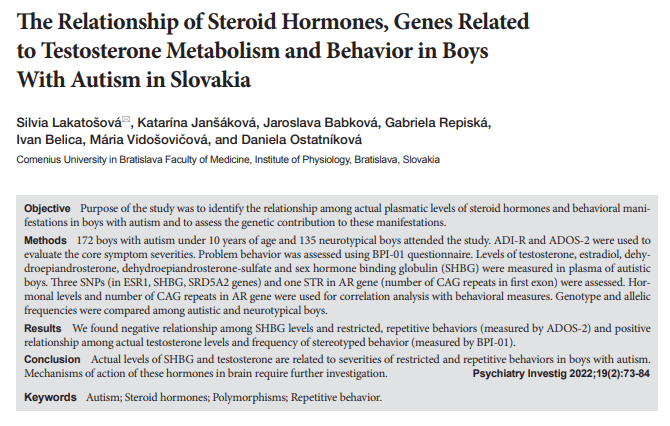
AUTHORS: Lakatošová, S., Janšáková, K., Babková. J., Repiská, G., Belica, I., Vidošovičová, M. and Ostatníková, D.
ABSTRACT:Objective: Purpose of the study was to identify the relationship among actual plasmatic levels of steroid hormones and behavioral manifestations in boys with autism and to assess the genetic contribution to these manifestations.
Methods: 172 boys with autism under 10 years of age and 135 neurotypical boys attended the study. ADI-R and ADOS-2 were used to evaluate the core symptom severities. Problem behavior was assessed using BPI-01 questionnaire. Levels of testosterone, estradiol, dehydroepiandrosterone, dehydroepiandrosterone-sulfate and sex hormone binding globulin (SHBG) were measured in plasma of autistic boys. Three SNPs (in ESR1, SHBG, SRD5A2 genes) and one STR in AR gene (number of CAG repeats in first exon) were assessed. Hormonal levels and number of CAG repeats in AR gene were used for correlation analysis with behavioral measures. Genotype and allelic frequencies were compared among autistic and neurotypical boys.
Results: We found negative relationship among SHBG levels and restricted, repetitive behaviors (measured by ADOS-2) and positive relationship among actual testosterone levels and frequency of stereotyped behavior (measured by BPI-01).
Conclusion: Actual levels of SHBG and testosterone are related to severities of restricted and repetitive behaviors in boys with autism. Mechanisms of action of these hormones in brain require further investigation.
Psychiatry Investig 2022;19(2):73-84


